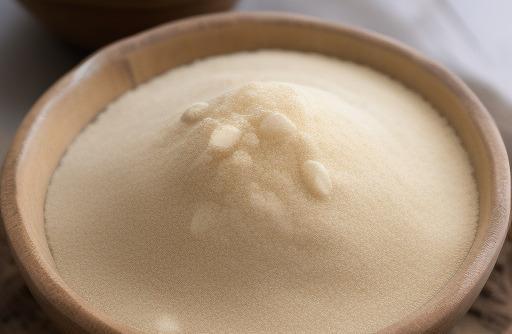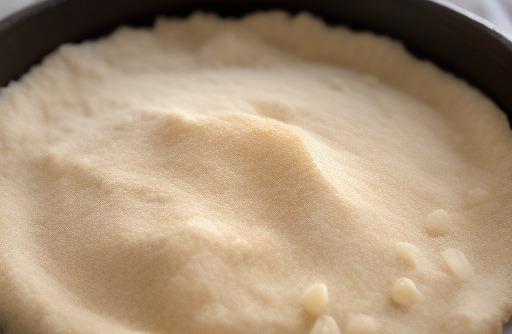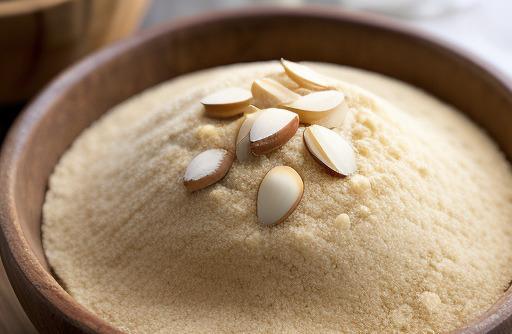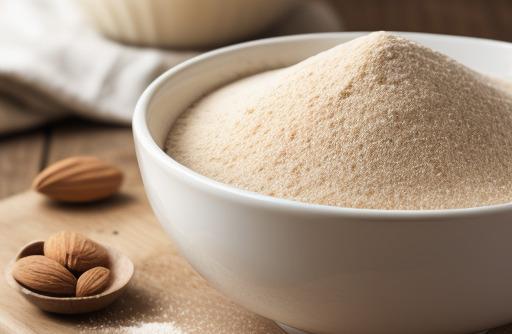- You are here:
- Home »
- Food Substitutes
- » Best Substitutes For Almond Flour
Best Substitutes For Almond Flour

Almond flour, which is made from finely ground almonds, has gained popularity in recent years as a nutritious and gluten-free alternative to traditional wheat flour. However, there may be instances when you need to find a substitute for almond flour, whether due to allergies, dietary restrictions, or simply because it’s not easily available. In this article, we will explore the best substitutes for almond flour and provide tips on how to choose the right substitute for your needs.
Key Takeaways
- Almond flour is a nutritious and gluten-free alternative to wheat flour.
- In some instances, finding a substitute for almond flour is necessary.
- There are several alternatives to almond flour, including coconut flour, oat flour, and chickpea flour.
- The right substitute will depend on the intended use and desired texture of the final product.
Why You Need A Substitute For Almond Flour
There are several reasons why you might need a substitute for almond flour. Some individuals have allergies to almonds or nut products, making it necessary to find a suitable alternative. Others may be following a specific diet that restricts the use of almond flour, such as a low-carb or keto diet. Additionally, almond flour may be unavailable or expensive in certain regions, making a substitute necessary for practical reasons.
Types Of Substitutes For Almond Flour

When it comes to finding a substitute for almond flour, there are several options available. The best substitute will depend on the specific recipe and desired outcome. Here are some popular alternatives to almond flour:
-
Coconut Flour: Made from dried coconut meat, coconut flour is a versatile gluten-free alternative. It has a light and airy texture and adds a hint of coconut flavor to baked goods. Coconut flour absorbs more liquid than almond flour, so it’s crucial to adjust the recipe accordingly.
-
Oat Flour: Oat flour is made by grinding whole oats into a fine powder. It is a nutritious and fiber-rich option that works well in many recipes. Oat flour has a slightly nutty flavor and provides a moist texture to baked goods. However, it’s not suitable for those with gluten allergies.
-
Chickpea Flour: Also known as gram flour or besan, chickpea flour is made from ground dried chickpeas. It is a common ingredient in Indian cuisine and is often used to make savory dishes like pakoras and fritters. Chickpea flour has a distinctive, slightly nutty flavor that works well in both sweet and savory recipes.
-
Rice Flour: Rice flour is made by finely grinding rice into a smooth powder. It has a mild and neutral taste, making it a versatile substitute for almond flour. Rice flour works well in a variety of recipes, including cakes, cookies, and bread. It’s important to note that rice flour can produce a slightly gritty texture in certain baked goods.
-
Hazelnut Flour: Hazelnut flour, like almond flour, is made by finely grinding hazelnuts. It has a similar texture and flavor profile to almond flour, making it an excellent substitute. Hazelnut flour works well in recipes that require a rich and nutty flavor, such as chocolate desserts or cookies.
Best Substitutes For Almond Flour

Choosing the right substitute for almond flour depends on the recipe and desired outcome. Here are some of the best substitutes for almond flour:
-
Coconut Flour: This is an ideal substitute for almond flour due to its gluten-free nature and light texture. However, coconut flour absorbs more liquid than almond flour, so you’ll need to increase the liquid content in your recipe. Start by using only 1/4 to 1/3 cup of coconut flour for every cup of almond flour called for in the recipe.
-
Oat Flour: If you’re not allergic to gluten, oat flour is an excellent substitute for almond flour. It provides a similar texture and moistness to baked goods. Oat flour can be used as a one-to-one replacement for almond flour in most recipes.
-
Chickpea Flour: Chickpea flour is a versatile and nutritious substitute for almond flour. It has a slightly nutty flavor that complements both sweet and savory dishes. When using chickpea flour as a substitute, start by using 3/4 cup of chickpea flour for every cup of almond flour called for in the recipe.
-
Rice Flour: Rice flour is another good substitute for almond flour, especially in recipes that require a neutral taste. It has a mild flavor and can be used as a one-to-one replacement for almond flour in most recipes. However, do keep in mind that rice flour may result in a slightly gritty texture in some baked goods.
-
Hazelnut Flour: If you’re looking for a similar flavor to almond flour, hazelnut flour is an excellent choice. It provides a rich and nutty taste that works well in desserts. You can use hazelnut flour as a one-to-one replacement for almond flour in most recipes.
Choosing The Right Substitute For Almond Flour

To choose the right substitute for almond flour, consider the following factors:
-
Intended Use: Consider the type of recipe you are making and the role almond flour plays in it. For example, if almond flour is used to provide structure in a cake, a substitute with similar properties (such as coconut flour or oat flour) would be most appropriate.
-
Texture and Flavor: Think about the desired texture and flavor of the final product. Coconut flour adds moisture and a slight coconut taste, while oat flour provides a slightly nutty flavor. Consider the flavor profile that will best complement your recipe.
-
Allergies and Dietary Restrictions: If you or someone you are cooking for has allergies or dietary restrictions, be sure to choose a substitute that is safe and suitable. For those with gluten allergies, options like coconut flour or oat flour would be preferable.
-
Availability and Cost: Consider the availability and cost of the substitute. Some substitutes, like almond flour itself, can be expensive or not readily accessible in certain regions. Choose a substitute that is affordable and easy to find in your area.
Keep in mind that experimenting with different substitutes may be necessary to find the one that works best for your specific needs and preferences. Pro Tip: When substituting almond flour with coconut flour, remember that coconut flour absorbs more liquid. Increase the liquid content in your recipe to compensate for this difference.
Cooking With Substitutes For Almond Flour

When cooking with substitutes for almond flour, it’s essential to make a few adjustments to ensure successful results:
-
Adjust Liquid Content: Substitutes like coconut flour and oat flour absorb more liquid than almond flour. Increase the liquid content in your recipe gradually until the desired consistency is achieved. It may take some experimentation to find the right amount.
-
Binders and Leavening Agents: Almond flour provides structure and moisture to baked goods. If using a substitute that doesn’t have the same properties, consider adding additional binders such as xanthan gum or eggs to improve the texture of the final product. Also, adjust the leavening agents (baking powder or baking soda) accordingly if necessary.
-
Experiment with Ratios: Since different substitutes have different textures and absorbency levels, it’s crucial to experiment with ratios to achieve the desired outcome. Start by using a smaller quantity of the substitute and gradually increase until the desired consistency is attained.
-
Flavor Adaptation: Keep in mind that substitutes like coconut flour and hazelnut flour have distinct flavors. While they can work well in certain recipes, consider how they will complement the overall flavor profile of the dish.
Remember that baking is a precise science, and substitutions may alter the final results. It may take some trial and error to find the right balance and achieve the desired texture and taste. Be patient and willing to adapt as you go.
Recipes Using Substitutes For Almond Flour

Here are a few recipes that use substitutes for almond flour:
Coconut Flour Pancakes
Ingredients:
- 1/4 cup coconut flour
- 1/4 teaspoon baking powder
- 2 tablespoons melted butter or coconut oil
- 4 eggs
- 1/4 cup milk of your choice
- 1 teaspoon vanilla extract
- Optional: sweetener of your choice, such as maple syrup or stevia
Instructions:
- In a mixing bowl, combine the coconut flour and baking powder.
- In a separate bowl, whisk together the melted butter or coconut oil, eggs, milk, and vanilla extract.
- Slowly add the wet ingredients to the dry ingredients, whisking until well combined.
- Let the batter sit for a few minutes to allow the coconut flour to absorb the liquid. If the batter becomes too thick, add a little more milk.
- Heat a non-stick skillet or griddle over medium heat. Pour about 1/4 cup of batter onto the skillet for each pancake.
- Cook for a few minutes until bubbles start to form on the surface, then flip and cook for another minute or two.
- Serve the pancakes with your favorite toppings, such as fresh fruit, nuts, or a drizzle of maple syrup.
Oat Flour Chocolate Chip Cookies
Ingredients:
- 2 cups oat flour
- 1 teaspoon baking soda
- 1/2 teaspoon salt
- 1/2 cup butter or coconut oil, softened
- 1/2 cup brown sugar or sweetener of your choice
- 1/4 cup granulated sugar or sweetener of your choice
- 2 eggs
- 1 teaspoon vanilla extract
- 1 cup chocolate chips
Instructions:
- Preheat your oven to 350°F (175°C) and line a baking sheet with parchment paper.
- In a medium bowl, whisk together the oat flour, baking soda, and salt.
- In a separate large bowl, cream together the softened butter or coconut oil, brown sugar, and granulated sugar until light and fluffy.
- Beat in the eggs one at a time, followed by the vanilla extract.
- Gradually add the dry ingredients to the wet ingredients, mixing until just combined.
- Fold in the chocolate chips.
- Drop rounded tablespoons of dough onto the prepared baking sheet, spacing them apart.
- Bake for 10-12 minutes, or until the edges are golden brown.
- Allow the cookies to cool on the baking sheet for a few minutes before transferring to a wire rack to cool completely.
Chickpea Flour Pizza Crust
Ingredients:
- 3/4 cup chickpea flour
- 1/4 cup water
- 1 tablespoon olive oil
- 1/2 teaspoon baking powder
- 1/2 teaspoon salt
- Optional: herbs or spices of your choice for added flavor
Instructions:
- In a mixing bowl, whisk together the chickpea flour, water, olive oil, baking powder, salt, and any additional herbs or spices.
- Let the batter rest for at least 30 minutes to allow the chickpea flour to hydrate.
- Preheat your oven to 425°F (220°C) and line a baking sheet with parchment paper.
- Once the batter has rested, pour it onto the prepared baking sheet and spread it out into a thin and even round or rectangle shape.
- Bake the crust for 10-12 minutes, or until it starts to turn golden brown around the edges.
- Remove the crust from the oven and add your desired pizza toppings.
- Return the pizza to the oven and bake for an additional 8-10 minutes, or until the cheese is melted and bubbly.
- Allow the pizza to cool for a few minutes before slicing and serving.
Feel free to get creative and experiment with these recipes using different substitutions or adding your own twists. The key is to adjust the quantities and ratios as needed to achieve the desired consistency and taste.
Storage And Shelf Life Of Substitutes

When it comes to storing substitutes for almond flour, it’s essential to keep them fresh and extend their shelf life:
-
Coconut Flour: Store coconut flour in an airtight container in a cool and dry place. It can last for several months when stored properly.
-
Oat Flour: Oat flour should be stored in an airtight container in the refrigerator or freezer to prevent it from going rancid. It can stay fresh for up to six months in the freezer.
-
Chickpea Flour: Like coconut flour, chickpea flour should be stored in an airtight container in a cool and dry place. When stored properly, it can last for up to a year.
-
Rice Flour: Rice flour should also be stored in an airtight container in a cool and dry place. It can last for several months.
-
Hazelnut Flour: Hazelnut flour should be stored in an airtight container in the refrigerator or freezer to maintain its freshness. It can stay fresh for up to six months in the freezer.
Keep in mind that these storage guidelines can vary depending on the brand and packaging of the substitutes. Always check the label for specific storage instructions.
Conclusion
While almond flour is a popular choice for gluten-free and low-carb baking, there are several viable substitutes available. Coconut flour, oat flour, chickpea flour, rice flour, and hazelnut flour are just a few examples of alternatives that can be used in various recipes. When selecting a substitute, consider the intended use, texture, flavor, and any dietary restrictions. Experiment with ratios and adjustments to achieve the desired results. With the right substitute and a bit of creativity, you can continue to enjoy a wide range of delicious baked goods.
FAQS
What Are The Best Flour Substitutes For Almond Flour?
Some commonly used flour substitutes for almond flour are coconut flour, hazelnut flour, sunflower seed flour, chickpea flour, and cassava flour.
Why Coconut Flour Is Considered One Of The Best Substitutes For Almond Flour?
Coconut flour is high in fiber and has a low glycemic index, which means it won’t spike your blood sugar. It also gives baked goods a fluffy and moist texture.
Can Hazelnut Flour Be A Nut-free Alternative For Almond Flour?
No, hazelnut flour includes nuts, but it can be a great alternative for those who are sensitive to almonds or prefer the hazelnut’s taste in recipes.
Is Sunflower Seed Flour A Good Substitute For Almond Flour In Gluten-free Recipes?
Yes, sunflower seed flour is a gluten-free and nut-free alternative that also contains more protein than almond flour.
What Makes Cassava Flour A Unique Substitute For Almond Flour?
Cassava flour is high in carbohydrates and rich in dietary fiber, making it a unique, gluten-free alternative to almond flour. Additionally, it gives recipes a similar crispy texture to that of almond flour.
Sources
About the Author Jenny
I'm Jenny, a housewife with an unwavering passion for food. My culinary journey began with my grandmother's kitchen, and it's now a full-fledged food blog. I've turned my love for cooking into a creative outlet, sharing recipes and stories with a global community of fellow food enthusiasts. It's proof that being a housewife can also mean pursuing your passions and savoring life's delectable moments.
